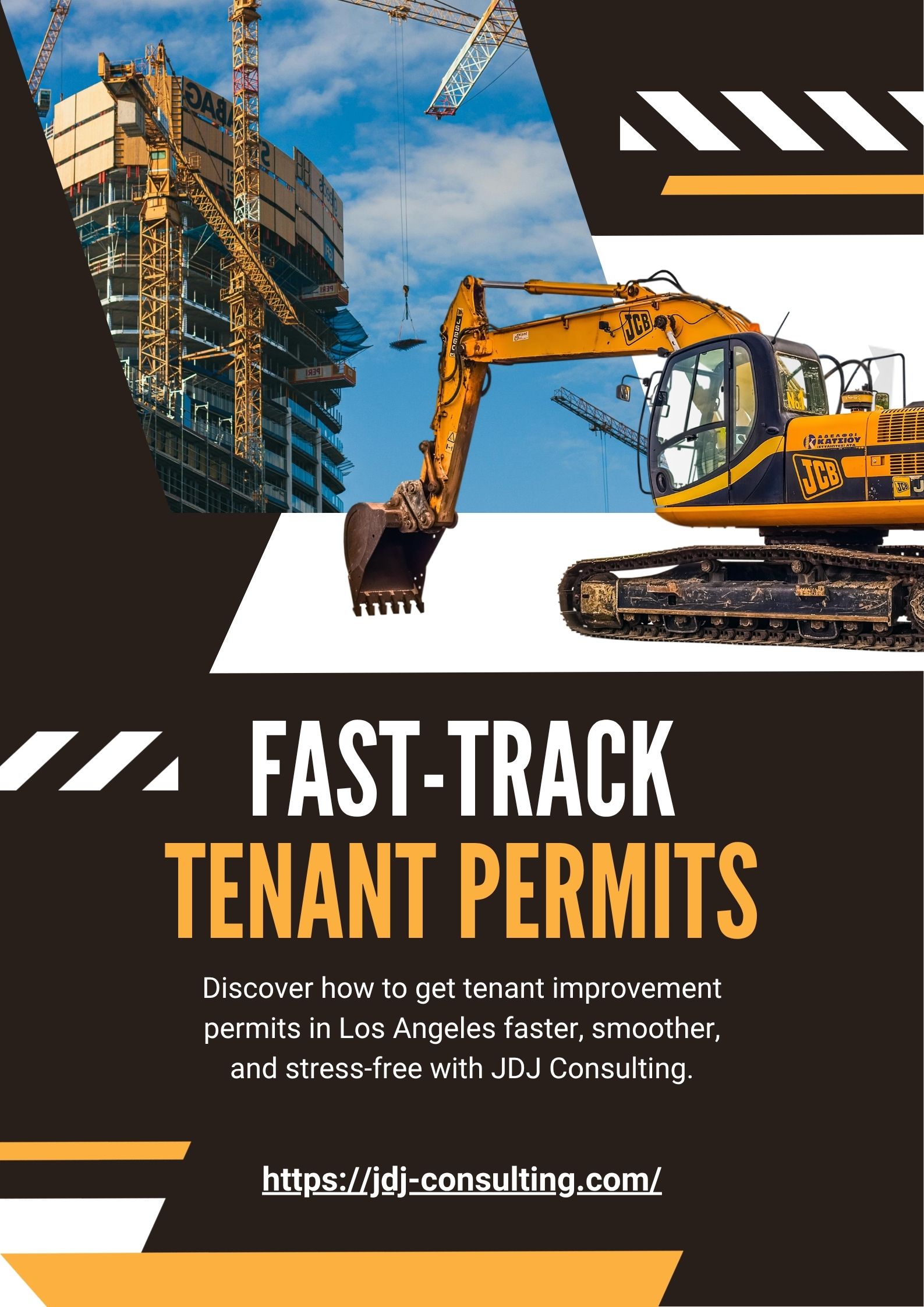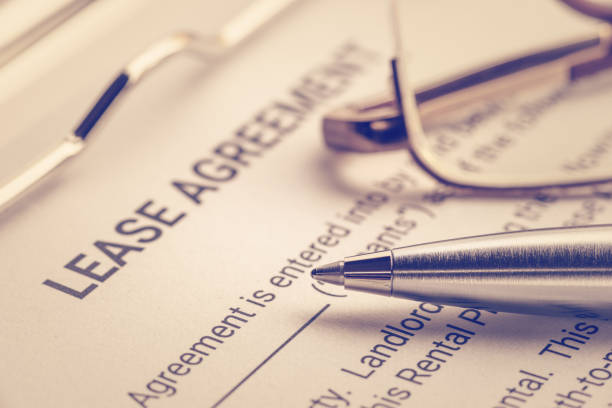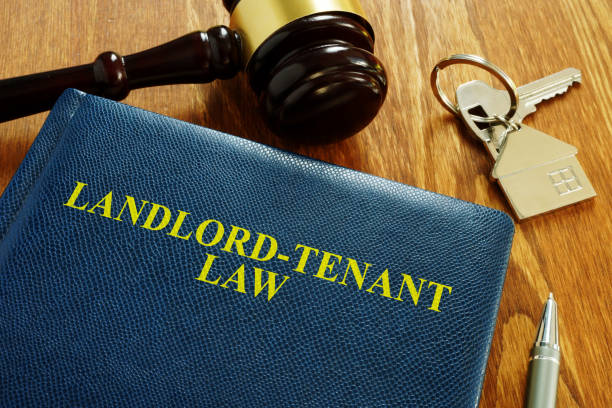A few years ago, a local café owner in Silver Lake signed a lease full of dreams. She envisioned open brick walls, a new espresso bar, and soft lighting for evening jazz nights. But within weeks, her excitement turned to stress — the city required multiple permits before she could even start work. Every department had its own checklist. Fire wanted one thing. Health wanted another. And the plan check corrections seemed never-ending.
Table of Contents
ToggleIf you’ve ever tried to remodel a commercial space in Los Angeles, you’ve probably felt that same frustration. Tenant improvements are exciting on paper — new interiors, modern layouts, better flow — but getting permits approved can feel like a full-time job. Between plan reviews, department clearances, and construction timelines, even small projects can stall for months.
That’s where fast-track permitting comes in. It’s not a shortcut, but a smarter, more strategic way to move your application through the system — one that saves time, money, and stress. Whether you’re opening a new restaurant in Downtown LA or redesigning an office in Culver City, understanding how to streamline the permit process can make all the difference.
In this guide, we’ll break down how tenant improvement permits work in Los Angeles, what slows them down, and how professional expediters like JDJ Consulting Group help clients secure approvals quickly and confidently. The goal is simple: help you get from design to doors open — faster, smoother, and with fewer surprises.
Fast-Track Tenant Improvement Flow
1️⃣ Pre-Check
Zoning, clearances, and basic feasibility review before design begins.
2️⃣ Prepare Plans
Architectural, MEP, Title 24, and scope of work documentation.
3️⃣ Submit Application
File your permit through LADBS (Express, Counter, or Regular Plan Check).
4️⃣ Inspections
Complete rough, systems, and final inspections to close out your permit.
💡 Tip: Hiring a professional permit expediter can help keep every step on schedule.
Tenant Improvements in LA: Basics You Need to Know
Before you start applying for permits, it helps to understand what “tenant improvement” actually means. In simple terms, a tenant improvement (often called TI work) refers to interior changes made to a leased space to make it usable for a new tenant or business.
These improvements might include:
- Remodeling an office layout
- Installing new lighting or flooring
- Building interior walls
- Adding restrooms or updating fixtures
- Upgrading HVAC or electrical systems
Each change—no matter how small—may trigger city permits or inspections.
Who Reviews Your TI Plans
In Los Angeles, more than one department may review your tenant improvement plans. The main agencies include:
| Department / Division | Role in Review | When Involved |
| LADBS (Los Angeles Department of Building and Safety) | Reviews building code, structural, accessibility, and energy compliance | Always required for most TI permits |
| City Planning Department | Verifies zoning, land use, and any overlay restrictions | Required if the project changes use or modifies exterior features |
| Fire Department (LAFD) | Checks fire/life safety and egress | Needed for occupancy or assembly use |
| County Health Department | Reviews kitchen or food-handling areas | Only if serving food or drinks |
These agencies work together, but each has its own process and timeline. Understanding which departments will review your plans helps you prepare the right documents early.
When Do You Need a Permit?
A permit is needed for almost all physical improvements inside a commercial space. Generally, you must apply for a permit if you:
- Add or remove walls or doors
- Relocate plumbing, mechanical, or electrical lines
- Change the use or occupancy type of the space
- Modify exits, fire sprinklers, or restrooms
- Install new HVAC units or lighting systems
If you’re only repainting walls or installing carpet, you might not need one. However, even small updates sometimes require approval when accessibility or fire code rules apply.
When in doubt, always check with LADBS or talk to a permit expediter before starting work. Getting clarification early can prevent major delays later.
Typical Permit Timelines
Los Angeles offers several permit lanes—some are fast, others take longer. Below is a quick overview:
| Permit Type | Typical Timeline | Common Use |
| Express Permit (Online / Over-the-Counter) | 1–3 business days | Minor interior work, like replacing ceiling tiles or fixtures |
| Counter Plan Check | 1–3 weeks | Medium-scope TIs, non-structural interior remodels |
| Regular Plan Check | 4–8 weeks or more | Structural changes, new occupancy, or complex commercial projects |
These timelines depend on how complete your plans are and whether planning clearances are required. Projects with clear, code-compliant drawings move much faster through LADBS.
The Fast-Track Concept: What It Is and Who Qualifies
Many people think all city permits take months. That’s not always true. Los Angeles has a Fast-Track Tenant Improvement Program that helps certain projects move more quickly through review.
This program was designed for interior, non-structural improvements—mainly offices, retail shops, or commercial spaces that don’t involve major structural changes. Fast-Track permits shorten review times by coordinating plan checks internally and allowing certain approvals to happen simultaneously.

Which Projects Qualify for Fast-Track
The following tenant improvement projects usually qualify for Fast-Track review:
- Interior remodels with no structural modifications
- Office or retail spaces with existing permitted use
- Electrical, plumbing, or mechanical upgrades that follow standard code details
- Projects that do not require a zoning variance or discretionary approval
If your work changes the occupancy type (for example, turning an office into a restaurant), Fast-Track usually doesn’t apply.
What Fast-Track Does—and Doesn’t—Do
The Fast-Track process helps speed up plan check assignments and simplifies communication between departments. However, it doesn’t mean your project can skip building codes or safety reviews.
Fast-Track helps with:
- Priority assignment for plan check review
- Shorter turnaround time for simple interior work
- Coordinated reviews by city departments
Fast-Track does not:
- Waive inspections
- Approve structural or use-change work
- Replace required engineering documentation
So while it’s a great option for straightforward TIs, it won’t fit every project.
🧩 Which Permit Lane Fits Your Project?
Answer a few quick questions to see your best permit option for tenant improvements in Los Angeles.
How to Check if Your Project Qualifies
You can confirm eligibility in three simple ways:
- Check the LADBS website: Look for the latest Fast-Track criteria or eligibility checklist.
- Call the Development Services Center: Staff can tell you whether your project fits Express, Counter, or Regular review.
- Consult a permit expediter: Professionals like JDJ Consulting can review your plans and tell you the best submission path.
Confirming early can save days or even weeks later in the process.
Step-by-Step: Before You Submit (Pre-Application Checklist)
Most permit delays start before you even file. The city rejects incomplete or inconsistent plans every day. Before you hit “submit,” take time to prepare a full package. That effort can save you weeks later.

Documents and Drawings to Prepare
Make sure every required item is ready, signed, and clear.
Checklist:
- Scaled architectural floor plans and elevations
- Scope of work description—what’s new, what stays
- Code analysis page with occupancy and use info
- Mechanical, electrical, and plumbing (MEP) drawings
- Accessibility compliance details and path of travel
- Title 24 energy documentation, if lighting or HVAC changes
- Tenant finish specifications and materials list
Submit drawings in clean, labeled PDF format. Each file should have a title block, index sheet, and date.
Zoning and Planning Pre-Checks
Confirm that your planned use fits the building’s zoning. If you skip this, LADBS will hold your permit until City Planning clears it.
Pre-check steps:
- Verify zoning use on ZIMAS (zimas.lacity.org)
- Confirm parking or floor-area requirements
- Check if the property is in a special overlay (Historic, Coastal, or Hillside)
- See if you need a Clearance Summary Worksheet (CSW) before submitting
If any of these apply, contact the Planning Department early. That single call can stop a two-week delay later.
Fire, Health, and Specialized Clearances
Certain improvements require other agencies to weigh in.
- Fire Department: any change to occupancy, exits, or fire sprinklers
- Health Department: food handling, kitchens, restrooms
- Public Works: exterior signage or sidewalk changes
Get their notes before you submit. LADBS will not issue permits until all related clearances are satisfied.
Fees, Certifications, and Signatures
Check that:
- The permit fee estimate is paid or ready for payment
- Architects and engineers have stamped all drawings
- Owner and tenant authorization forms are signed
Even a missing signature can stall approval.
Pro Tip: Schedule a Pre-Submittal Meeting
You can meet with LADBS or City Planning in person or online. Bring drawings and ask about potential red flags. These meetings often save multiple correction cycles later.
How to Choose the Right Permit Lane at LADBS
Picking the correct lane is critical. The wrong one can double your review time. LADBS offers three main lanes: Express, Counter Plan Check, and Regular Plan Check.
Express Permit (Online / ePermit)
Use this for simple, non-structural work. Examples include:
- Replacing ceiling tiles or light fixtures
- Small tenant space alterations under a set area limit
- Cosmetic updates without plumbing or mechanical work
If your drawings meet the city’s Express criteria, you can often get approval within one to three business days. Always confirm eligibility on the LADBS website before filing.
Counter Plan Check
This option suits small or moderate tenant improvements that need a plan review but not a full structural analysis.
Typical examples:
- Interior partitions under a certain height
- Standard HVAC or electrical layouts
- Minor restroom remodels
You’ll bring printed drawings or submit PDFs for a brief plan review. If everything is in order, the permit can often be issued the same day.
💰 Tenant Improvement Permit Fee Estimator
Estimate your Los Angeles permit fees before applying. For precise pricing, JDJ Consulting can prepare a full project cost analysis.
Regular Plan Check
Large or complex projects require full plan check review. This includes:
- Structural changes or seismic upgrades
- Major MEP rework
- New occupancy classifications
- Buildings with multiple tenants or floors
Expect four to eight weeks depending on reviewer workload. Provide a complete, well-organized submission to reduce correction rounds.
Why an Expediter Can Help
An experienced permit expediter knows exactly which lane fits your project. They verify eligibility, prepare submittals, and handle scheduling with LADBS staff. This can save you hours of back-and-forth and prevent costly mistakes.

Submitting Your Application: Online Portals and In-Person Tips
LADBS allows both online and in-person submissions. Choosing the right method depends on your project’s scope.
Online Portals
For smaller projects, use the LADBS Online Application System (OAS). You can:
- Upload drawings and documents directly
- Pay fees online
- Track progress through your dashboard
Label each file correctly. Use clear names like “Sheet A1 – Floor Plan.pdf.” Consistency helps reviewers move faster.
In-Person Submissions
For larger or complex TIs, visit a Development Services Center. Bring two printed plan sets and a digital copy on a USB drive. At the counter, you’ll:
- Verify scope and permit type
- Pay plan check fees
- Receive your assigned reviewer and tracking number
Appointments are strongly advised; walk-ins may wait hours.
How to Label Files for Faster Review
Follow these steps:
- Include a cover page with project address and contact info.
- Combine all sheets into one organized PDF.
- Add bookmarks for each discipline (Architectural, Mechanical, Electrical, Plumbing).
These small steps reduce confusion and prevent “incomplete submission” notices.
Common Submission Mistakes
Avoid:
- Missing forms or signatures
- Outdated code references
- Drawings with inconsistent scales
- Unreadable or scanned-in images
Each of these will trigger corrections and delay your permit.
What to Include in Your Cover Letter
Keep it short and factual. Mention:
- Project address and suite number
- Type of business or tenant
- Scope summary (e.g., “Interior remodel of 2,000 sq. ft. office space”)
- Key code references
- Contact person for questions
A clear cover letter tells reviewers exactly what they’re looking at, and that helps approvals move faster.
Navigating Planning Clearances & CSWs (Clearance Summary Worksheets)
Even if your project looks simple, the City Planning Department might still need to review it before LADBS can issue your permit. This step often surprises tenants and owners. Many TI delays happen because planning clearances weren’t handled early.
Let’s break down what this means and how to manage it smoothly.
What Is a Clearance Summary Worksheet (CSW)?
A Clearance Summary Worksheet, or CSW, is a document that lists all the planning-related reviews your project needs.
When you submit for a tenant improvement permit, LADBS checks whether the property requires planning clearances. If yes, they’ll send your case to City Planning, which issues a CSW with specific conditions or departments that must approve your plans.
Think of the CSW as your project’s checklist for planning-related approvals.
| Section on CSW | What It Means | Who Reviews It |
| Zoning / Land Use | Confirms that your proposed use fits zoning rules | City Planning |
| Parking Compliance | Ensures you have the right number of parking spaces | City Planning or LADOT |
| Historic or Overlay Zone | Checks if building lies in a protected area | Office of Historic Resources |
| Fire / Life Safety | Coordinates with LAFD | Fire Department |
| Environmental / CEQA | Ensures compliance with environmental standards | City Planning (Environmental Section) |
Each listed item must be cleared before LADBS issues your permit.
When You Need a CSW or Planning Clearance
You’ll need planning clearance if your project:
- Changes the use of a space (for example, from retail to restaurant)
- Alters the exterior of the building or signage
- Adds floor area, new walls, or reconfigures exits
- Lies within a specific plan, overlay, or historic district
If your work is purely interior and doesn’t change use, you might skip this step—but it’s still smart to verify.
How to Complete a CSW and Speed Up Review
A complete, accurate submittal speeds up approvals. Here’s what to do:
- Include a legal description and parcel number (APN) on your plans.
- Make sure your floor plans match your zoning information.
- Respond quickly to any requests for clarification.
- Track your case number through the City Planning portal.
- Once clearances are signed off, confirm LADBS received the update.
If you’re unsure, a permit expediter can review your CSW and help coordinate department responses so approvals don’t get lost in the queue.
When Planning Review Becomes Discretionary
Most tenant improvements use ministerial review, which follows clear city codes. However, if your project needs a variance, conditional use permit (CUP), or plan approval, it becomes discretionary.
That means public notices, potential hearings, and longer processing times—sometimes months instead of weeks.
For these cases, professional planning help or an entitlement consultant is a must.
📊 Permit Approval Timeline: Start to Finish
Every step matters when fast-tracking tenant improvement permits in Los Angeles. Here’s how long each stage usually takes.
1️⃣ Pre-Design Consultation
Meet with a JDJ consultant to review feasibility, zoning, and building codes.
⏱️ 1–3 days
2️⃣ Plan Preparation
Architects prepare tenant improvement plans and submit to LADBS online.
⏱️ 5–10 days
3️⃣ Department Clearances
Fire, health, and public works departments issue required clearances.
⏱️ 5–15 days
4️⃣ Plan Check Review
City plan check engineers review drawings for compliance.
⏱️ 10–25 days
5️⃣ Permit Issuance
Once approved, LADBS issues your construction permit.
⏱️ 1–3 days
📅 Average Total Time: 22–45 business days
📞 Schedule a Free Project ReviewInspections, Corrections, and Final Approvals
Getting your permit is only half the process. You still need to pass inspections and resolve any corrections before you can open your space or receive a Certificate of Completion.
Typical Inspection Sequence for Tenant Improvements
Once your permit is issued, you’ll schedule inspections at different stages of construction.
| Inspection Stage | What Inspectors Check |
| Rough Inspection | Framing, electrical wiring, plumbing rough-ins |
| System Inspections | HVAC ducts, fire sprinklers, alarms |
| Accessibility Checks | Restroom clearances, door hardware, ramp slopes |
| Final Inspection | Finishes, safety exits, signage, final MEP systems |
All must pass before you can occupy the space.
Handling Correction Notices (Plan Check Comments)
Sometimes plan checkers or inspectors issue correction notices. These identify issues that need fixing before approval.
When this happens:
- Read each comment carefully.
- Fix the issue on revised drawings.
- Highlight what was changed and reference the correction number.
- Resubmit or schedule a reinspection as directed.
Clear, concise responses shorten review cycles and build goodwill with inspectors.
Temporary Certificates of Occupancy (TCO)
In some cases, you can request a Temporary Certificate of Occupancy (TCO). A TCO allows partial occupancy while final items are pending, like signage or minor electrical finishes.
Your inspector or plan checker decides if your space qualifies. It’s a great option for tenants facing move-in deadlines while small punch-list items remain.
Speed-Up Tactics That Work (Practical and Proven)
Even the best-prepared projects can stall if you don’t follow smart timing strategies. Here are the methods we’ve seen save weeks of review time for Los Angeles tenant improvements.

Proven Tips to Accelerate Approval
- Choose the fastest qualifying lane.
Use Express or Counter Plan Check when possible. Confirm eligibility before you submit. - Complete your packet 100%.
Missing one drawing or calculation triggers automatic rejection. Double-check everything before uploading. - Schedule early planning calls.
A five-minute chat with City Planning can prevent a two-week delay. - Use standard, code-compliant details.
Custom designs may require extra review time. Standard details usually pass faster. - Coordinate all consultants.
Have architects, engineers, and contractors agree on scope before submittal. Conflicting plans cause revisions. - Track submissions daily.
Log into your LADBS dashboard often. Respond to corrections immediately. - Hire an experienced permit expediter.
Professionals know department contacts, submittal rules, and scheduling systems. Their coordination can shorten timelines dramatically.
Communicating Effectively with Reviewers
Good communication builds trust. When emailing plan checkers or inspectors:
- Use a clear subject line: “TI Plan Correction Response – Project Address”
- Keep the message short and polite
- Attach revised sheets with notes referencing each correction
- Copy your project coordinator for recordkeeping
Professional, respectful communication makes reviewers more responsive.
When Things Go Wrong: Common Causes of Delay
Even a small tenant improvement can hit red tape if timing or paperwork isn’t handled carefully. Below are the most common reasons permit applications get stuck — and how to prevent each one.
1. Missing or Mismatched Information
Most delays start with incomplete or inconsistent documentation.
- Plan sheets that don’t match the project address or legal lot description
- Missing mechanical, electrical, or plumbing sheets
- Incorrect occupancy or use classification
- Outdated ownership information
Fix: Always verify your application, plans, and forms are aligned before submittal. If your architect updates one file, ensure all related documents are updated too.
2. Zoning or Use Conflicts
Changing a space’s use—say, from retail to café—can trigger zoning conflicts.
If the site’s zoning doesn’t allow your new use, the city will require additional clearances or even a conditional use permit (CUP).
Fix: Check zoning early through ZIMAS (Zoning Information Map Access System) or consult with a planning specialist before signing a lease.
3. Department-to-Department Bottlenecks
Tenant improvements often require clearances from multiple agencies—Fire, Health, LADOT, City Planning, and Building & Safety. When one department lags, the entire process freezes.
Fix: Keep a shared tracking sheet for all departments involved. Contact each reviewer weekly for updates.
4. Overlooked Clearances or CSW Steps
Failing to complete a Clearance Summary Worksheet (CSW) can delay approval by weeks. It’s a small but critical step that’s easy to miss if you’re not familiar with city procedures.
Fix: Ask LADBS to confirm whether your project requires a CSW the same day you submit.
5. Incorrect Valuation or Fee Payments
If your declared project value doesn’t match the city’s estimate, LADBS may flag it for review.
Understating costs can cause recalculations, resubmittals, or new invoices.
Fix: Declare a realistic construction valuation that matches your contractor’s cost estimate.
🚀 Ready to Fast-Track Your Tenant Improvement Permit?
Whether you’re planning a café renovation or upgrading a commercial suite, our Los Angeles permit expeditors make approvals faster and easier. Save weeks of delays — and start construction sooner.
JDJ Consulting Group — Building Permit Expediting & Development Advisory in Los Angeles, CA
Costs, Fees, and Budgeting for TI Permits
Understanding permit costs upfront helps you avoid surprise expenses mid-project.
Tenant improvement permits in Los Angeles involve several layered fees, depending on project size and review level.
Typical Permit Fees
| Fee Type | Approximate Range | Purpose |
| Plan Check Fee | $600 – $5,000 | City review of your submitted plans |
| Permit Issuance Fee | $200 – $2,000 | Covers permit administration and processing |
| Department Clearances | $300 – $2,500 | Fire, Health, LADOT, or Planning approvals |
| Inspection Fees | $200 – $1,500 | Field inspections throughout construction |
| Technology / Surcharge | 3% – 5% | Citywide digital system and service charges |
The larger and more complex your project, the higher the total fees.
Additional Costs to Plan For
Beyond city permit fees, you’ll also need to budget for:
- Architectural and engineering design fees
- Consultant or expediter services
- Utility upgrades or connection fees
- Plan revision charges if scope changes mid-review
- Special inspections (structural, fireproofing, accessibility)
Always get written estimates for each category before submitting your application.
Budgeting Tips
- Add 15–20% contingency for unforeseen reviews or correction resubmittals.
- Ask LADBS about fee credits if you’re revising an existing permit.
- Pay all invoices promptly—unpaid balances automatically halt your case file.
Budget transparency is key; tracking each line item avoids downstream shocks.
Why Hire a Permit Expediter?
For many Los Angeles projects, especially tenant improvements with multiple agency reviews, hiring a permit expediter isn’t a luxury—it’s a timesaver and risk reducer.
What a Permit Expediter Actually Does
A professional expediter acts as your project’s liaison between LADBS, City Planning, and every reviewing department. Their main responsibilities include:
- Reviewing drawings for submittal readiness
- Coordinating with city plan checkers
- Submitting and tracking all clearances and corrections
- Scheduling meetings and inspections
- Keeping communication consistent among your architect, contractor, and reviewers
In short, they handle the paperwork maze so you can focus on construction and business operations.
Benefits for Tenant Improvements
- Time Savings:
An expediter knows which reviewers to contact and how to navigate LADBS Express lanes. That can shave weeks off approval time. - Fewer Revisions:
They identify missing details or inconsistencies before submission, reducing correction rounds. - Cost Control:
Avoiding delays saves rent, labor, and financing costs tied to extended construction schedules. - Stress Reduction:
Having one point of contact for all agencies simplifies your workflow. - Strategic Planning:
An experienced expediter knows how to structure phased permits, TCO requests, and CSW clearance sequences efficiently.
Choosing the Right Expediter
Look for someone who:
- Has LADBS familiarity and department relationships
- Can manage digital (ePlan) and in-person processes
- Understands both commercial and retail tenant improvements
- Provides weekly status reports
Always ask for recent project references and confirm turnaround averages.
Final Sign-Off and Certificate of Occupancy
Once your construction is complete, you’re not done just yet. Before tenants can legally move in or start operations, the city must perform final inspections and issue a Certificate of Occupancy (C of O) or Temporary Certificate of Occupancy (TCO).
Step 1: Schedule Final Inspections
You’ll need to book inspections for:
- Building and Safety – Verifies structural and code compliance
- Fire Department – Confirms egress, sprinklers, and alarms
- Health Department – Required for food-related spaces
- Public Works / LADOT – If your work affects sidewalks, driveways, or parking
Use the LADBS online portal or 311 call center to schedule inspections at least 48 hours in advance.

Step 2: Pass All Required Inspections
Each inspector signs off on your permit record. If any issues arise—missing signage, untested fire alarms, or incomplete finishes—they’ll note corrections. Once those are resolved, the inspector revisits for final approval.
Pro tip: Always keep your approved plans and permit card on-site for inspectors. Missing paperwork often causes avoidable re-inspections.
Step 3: Get the Certificate of Occupancy
After passing all inspections, LADBS issues your Certificate of Occupancy. This document legally certifies the space’s approved use (e.g., retail, office, restaurant).
If you need to open before full completion, you can request a Temporary Certificate of Occupancy (TCO). A TCO allows early move-in or soft opening while minor corrections are pending—ideal for businesses with fixed opening dates.
| Document Type | Purpose | When Issued |
| Certificate of Occupancy (C of O) | Confirms all permits are complete and space is safe for use | After final inspections |
| Temporary Certificate of Occupancy (TCO) | Allows early occupancy while minor items remain | Before full completion, upon city approval |
Keep digital and hard copies of the C of O—landlords and insurance carriers often require it before releasing final payments.
📈 Common Permit Delay Reasons in Los Angeles
Understanding the biggest sources of delay helps plan a smoother approval process for tenant improvements.
Source: JDJ Consulting analysis based on recent LADBS case data (2024–2025)
Tips for First-Time Tenants in Los Angeles
Securing permits for tenant improvements can feel intimidating the first time. Here are practical, field-tested tips from consultants who work with LADBS every week.
1. Visit the Space Before Signing
Always do a pre-lease site walk with your architect or contractor. Confirm where existing plumbing, electrical, and load-bearing walls are located.
If your layout needs major changes, budget extra for plan check revisions or structural upgrades.
2. Know the Difference Between Cosmetic and Structural Work
- Cosmetic improvements: Paint, flooring, shelving, or fixtures often don’t need permits.
- Structural or mechanical work: Anything involving framing, walls, HVAC, or new plumbing almost always requires permits.
Knowing the difference helps you plan both time and costs more accurately.
3. Submit Complete Plans—Not Partial Sets
LADBS won’t accept incomplete or “in-progress” drawings.
Have your architect coordinate mechanical, electrical, and plumbing (MEP) sheets before submitting.
Every missing piece adds days to your plan check timeline.
4. Communicate Regularly with Your Reviewer
Silence is not golden during permitting. Check in with LADBS reviewers weekly—by phone or email—to confirm case progress. Quick follow-ups often prevent small issues from growing into major delays.
5. Keep a Permit Folder
Keep digital and printed copies of every submittal, receipt, and clearance. If something gets misplaced at the city level, having your own copies saves time and confusion.
How JDJ Consulting Group Helps You Move Faster
At JDJ Consulting Group, we specialize in Los Angeles permit expediting and entitlement consulting for both residential and commercial clients.
For tenant improvements, our goal is simple: get your approvals issued quickly and cleanly.
What We Do
- Review and organize all documents before submittal
- Coordinate with LADBS, City Planning, and Fire Department reviewers
- Manage Clearances, CSW, and parallel reviews
- Track correction cycles and follow up proactively
- Assist with Certificates of Occupancy and TCOs
Why Businesses Choose JDJ
- Decades of experience working with Los Angeles agencies
- Efficient, real-world communication—no waiting games
- Clear, transparent tracking for every step
- Flexible support tailored to landlords, tenants, and contractors
Our team understands that every day of delay costs money. That’s why we prioritize fast-track approvals without cutting corners.

Conclusion
Getting permits for tenant improvements in Los Angeles doesn’t have to be a long, frustrating process. With the right plan, complete drawings, and proactive follow-up, you can turn what seems like a bureaucratic maze into a clear, organized path.
The truth is, Los Angeles permitting isn’t broken — it’s just layered. Every department has a role, and understanding how they work together is what saves time. When you combine that insight with the guidance of a professional expediter, you gain both speed and certainty.
At JDJ Consulting Group, we’ve helped hundreds of property owners, landlords, and tenants move their projects from concept to completion without unnecessary delays. Whether you’re upgrading an existing suite or building a new retail layout, our team knows the process — from plan check to Certificate of Occupancy — inside and out.
So before your next remodel hits a roadblock, talk to our team. We’ll help you map out each step and handle the paperwork so you can focus on what really matters: creating a space that works for your business.
References
- Los Angeles Department of Building and Safety (LADBS) – Official Permit Portal
- City of Los Angeles Planning Department – Zoning Information and Map Access System (ZIMAS)
- Los Angeles Fire Department – Fire Development Services
- California Building Standards Code (Title 24) – Statewide building regulations
- JDJ Consulting Group Blog – Building Permit Insights for Los Angeles
Ready to start your tenant improvement project?
Let JDJ Consulting Group handle the red tape so you can focus on your business.
Call us today at (818) 793-5058 or visit our Contact Page to schedule a free consultation.
We’ll review your plans, outline your permit strategy, and help you secure approvals faster — with less stress and more confidence.
Permit Review Time by Permit Lane
Data source: LADBS sample processing times (illustrative).
FAQs: How to Get Permits for Tenant Improvements in Los Angeles
What is a tenant improvement permit in Los Angeles?
A tenant improvement permit is required when you modify, remodel, or upgrade a commercial or office space before occupying it. It covers work such as new walls, HVAC, plumbing, or lighting changes.
The City of Los Angeles uses this permit to confirm your design meets building, fire, and accessibility codes before construction starts.
Who needs a tenant improvement permit?
You need a tenant improvement permit if you’re:
- Changing the layout of a leased space
- Installing new plumbing or electrical systems
- Upgrading HVAC or restrooms
- Changing use (for example, converting retail to restaurant)
Even if your work seems simple, any modification to structure or systems typically triggers permit requirements under LADBS rules.
How long does it take to get tenant improvement permits in Los Angeles?
Approval time depends on project scope.
- Small remodels: 2–4 weeks under Express Permit
- Medium projects: 6–10 weeks for plan check and corrections
- Large or multi-department projects: 3–6 months
Fast-track permitting through professionals or pre-screened plans can significantly shorten these timelines.
Can I start construction before permits are issued?
No, construction cannot legally begin before permits are issued. Doing so can result in penalties, stop-work orders, or additional fees. You may request an early start only after LADBS grants a special authorization, but this is rare and typically applies to limited work such as non-structural demolition.
What documents are required to submit a tenant improvement application?
You’ll need:
- Completed permit application forms
- Full set of architectural and MEP plans
- Signed property owner authorization
- Valuation sheet and energy compliance forms
- Any required clearances (Fire, Planning, or Health)
Submitting accurate and complete documentation helps prevent correction delays and resubmittals.
What is the difference between a building permit and a tenant improvement permit?
A building permit applies to new construction or structural work, while a tenant improvement permit focuses on interior modifications within an existing building. Both ensure safety and code compliance, but TI permits usually involve shorter reviews since they work within existing frameworks.
How can I fast-track my tenant improvement permit in Los Angeles?
You can fast-track your permit by:
- Submitting a complete plan set with no missing sheets
- Coordinating early with all departments
- Using LADBS Express Permit services for smaller projects
- Hiring a professional permit expediter to manage reviews and follow-ups
These steps can reduce processing time from months to weeks.
What is the LADBS Express Permit Program?
The LADBS Express Permit Program allows certain small or non-structural tenant improvements to be approved over the counter or through online submission.
Examples include interior remodels without structural change, lighting upgrades, or finish replacements. It’s ideal for quick projects under licensed professionals.
What are the most common reasons tenant improvement permits get delayed?
The biggest delays come from:
- Incomplete drawings or missing signatures
- Conflicts between architectural and engineering sheets
- Unpaid plan check fees
- Department coordination issues (Fire, Health, Planning)
- Zoning conflicts
Being proactive with submittals and communication prevents most holdups.
How much do tenant improvement permits cost in Los Angeles?
Permit fees vary widely depending on project value and complexity.
- Small retail remodels: $1,000–$3,000
- Medium commercial build-outs: $3,000–$8,000
- Large multi-trade projects: $10,000+
Additional costs include design fees, consultant charges, and inspection expenses. Always budget a 15–20% contingency for corrections or revisions.
Can I use my contractor to pull tenant improvement permits?
Yes, licensed contractors can pull permits on behalf of the property owner or tenant. However, the legal responsibility for accuracy still falls on both parties. Many businesses hire consultants or expediters to manage this step and avoid administrative errors.
What departments are involved in tenant improvement approvals?
Typical departments include:
- Building & Safety (LADBS) – Main permit and inspection body
- City Planning – Zoning and use compliance
- Fire Department – Fire and life-safety systems
- Public Works / LADOT – Site and parking impacts
- County Health Department – Food service or restrooms
Coordination among these agencies determines how fast your approval moves.
Do I need zoning clearance for tenant improvements?
If your business type or use differs from the previous tenant’s, yes. A zoning clearance ensures the space is legally permitted for your intended use. Restaurants, gyms, and medical offices often need this extra step before LADBS accepts plans.
What happens during the plan check process?
During plan check, LADBS reviewers evaluate your drawings for compliance with building codes, accessibility, and fire regulations. You may receive correction comments that your architect must address. Once all corrections are cleared, the city issues your permit.
How do inspections work after the permit is issued?
Once construction begins, city inspectors verify that the work matches approved plans.
Inspections typically include:
- Rough and final electrical
- Plumbing and mechanical
- Structural framing (if applicable)
- Final building and fire inspections
Passing all inspections is required before occupancy.
What is a Certificate of Occupancy, and why is it important?
A Certificate of Occupancy (C of O) confirms that construction is complete, safe, and compliant with city codes. Without it, tenants cannot legally occupy the space. For projects not yet fully complete, you may request a Temporary Certificate of Occupancy (TCO) for limited use.
How can a permit expediter help with tenant improvement permits?
A professional expediter streamlines the entire permitting process by:
- Reviewing plans before submittal
- Coordinating directly with LADBS reviewers
- Managing department clearances
- Tracking and resolving corrections quickly
Their experience and connections can reduce approval times significantly while minimizing stress.
What’s the best way to estimate permit timelines and costs?
Request a pre-submittal consultation with your architect or consultant. They’ll review your project scope, identify all required clearances, and estimate both fees and review durations. This upfront planning helps you avoid surprise costs or delays later.
Are there different rules for restaurant or food service tenant improvements?
Yes. Restaurants or food-related businesses must meet additional requirements from the Los Angeles County Department of Public Health (LACDPH) and the Fire Department.
Health plan checks, grease interceptor permits, and ventilation requirements add extra review steps, so budget more time for these projects.
How can JDJ Consulting Group help with fast-track tenant improvement permits?
JDJ Consulting Group offers hands-on support for every stage of the permitting process:
- Pre-submittal document reviews
- Coordination with LADBS and other city departments
- Clearance tracking and status updates
- Certificate of Occupancy support
Our team specializes in Los Angeles tenant improvement projects, helping clients save weeks of time and avoid unnecessary stress.






